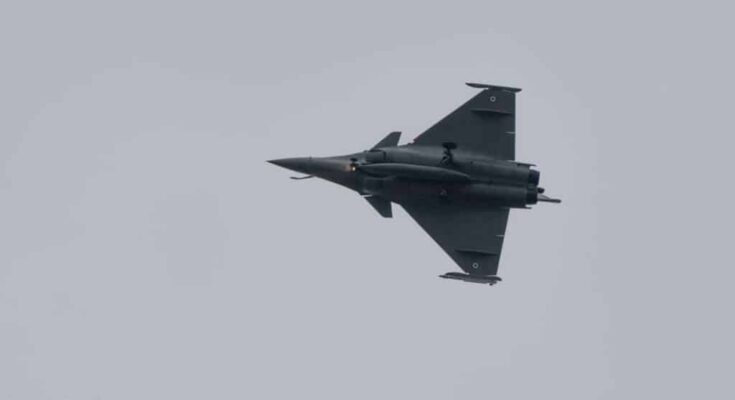
At the end of September, the last batch of Rafale F3Rs from the 332 “Hawk” Squadron will arrive. The squadron will receive one aircraft per month, with deliveries completed by January 2025.
Greek daily Kathimerini reports that these six Rafales are new-build aircraft ordered in March 2022 along with three FDI frigates. Once they enter service, the 332nd will have 24 combat-ready aircraft, making them the most modern in Greece’s arsenal until the F-35s arrive later this decade.
Features of the Rafale F3R
The Rafale is a French-made, twin-engine, multirole combat aircraft capable of covering a wide range of operational missions. It joined the Greek Air Force (PA) in 2021 under contract 013C/20, which included 24 aircraft—12 used and 12 new. Among these, Greece will receive 18 single-seater Rafale EGs and 6 two-seater Rafale DGs.
The Rafale can handle multiple roles simultaneously (omnirole), allowing it to conduct different missions in a single flight. With 14 suspension stations, it can carry up to 9.5 tons of external loads.
The Rafale’s armament includes Meteor long-range air-to-air missiles, MICA EM and IR missiles, SCALP EG cruise missiles, and Exocet AM39 Block 2 Mod 2 air-to-surface missiles. It also carries precision weapons such as the GBU 12/16/24 and AASM, along with a 30 mm gun.
When the new Rafales enter service, the 332nd squadron will operate 24 combat-ready aircraft, enhancing Greece’s capabilities until the F-35s arrive. The first Rafale, painted in Greek colors, landed at the 114th Fighter Wing in Tanagra in January 2022.
This addition marked a significant step forward for the Air Force, introducing a 4.5 generation fighter with advanced sensors and AESA radar technology. The Rafale also serves as a platform for Meteor air-to-air missiles, capable of imposing “area denial” due to their long range and high speed, exceeding Mach 4.
Expanding the Rafale fleet
With the completion of the first fully operational Rafale squadron, the Air Force plans to establish a second squadron, likely the 331st, also based in Tanagra. The approved plan includes selling the Mirage 2000-5s to the manufacturer Dassault or directly to the French Air Force. Although recent political instability in France has slowed discussions, Greece remains optimistic about reaching an agreement soon.
Athens aims to sell the 24 Mirages while they are still operational and valuable. The funds saved will help finance the purchase of up to 12 additional Rafales. This will allow the 331 and 332 squadrons to each operate 18 aircraft. The political and military leadership plan to include this strategy in the new EMPAE for the armed forces.
By 2030, the Air Force plans to have three types of fighters. These will include F-35s, F-16 Vipers, and Rafales, with a total of 200 aircraft.
F-16 and F-35 updates
In September, ODA will deliver three more F-16 Vipers to Greece’s Air Force, gradually bringing the program back on track. These fighters will join the 340th squadron “Fox.” They will complete deliveries in Crete, while the 337th squadron “Fantasma” in Larissa will follow.
Regarding the F-35s, the US government is expected to finalize the formal acceptance of the signed letter of intent (LOA) in the coming weeks. Following this, the contract will be awarded to Lockheed Martin. Greece plans to procure 20 fifth-generation F-35 fighters, with an option for 20 more. Military sources indicate that Greece aims to exercise this option by the middle of the next decade.



